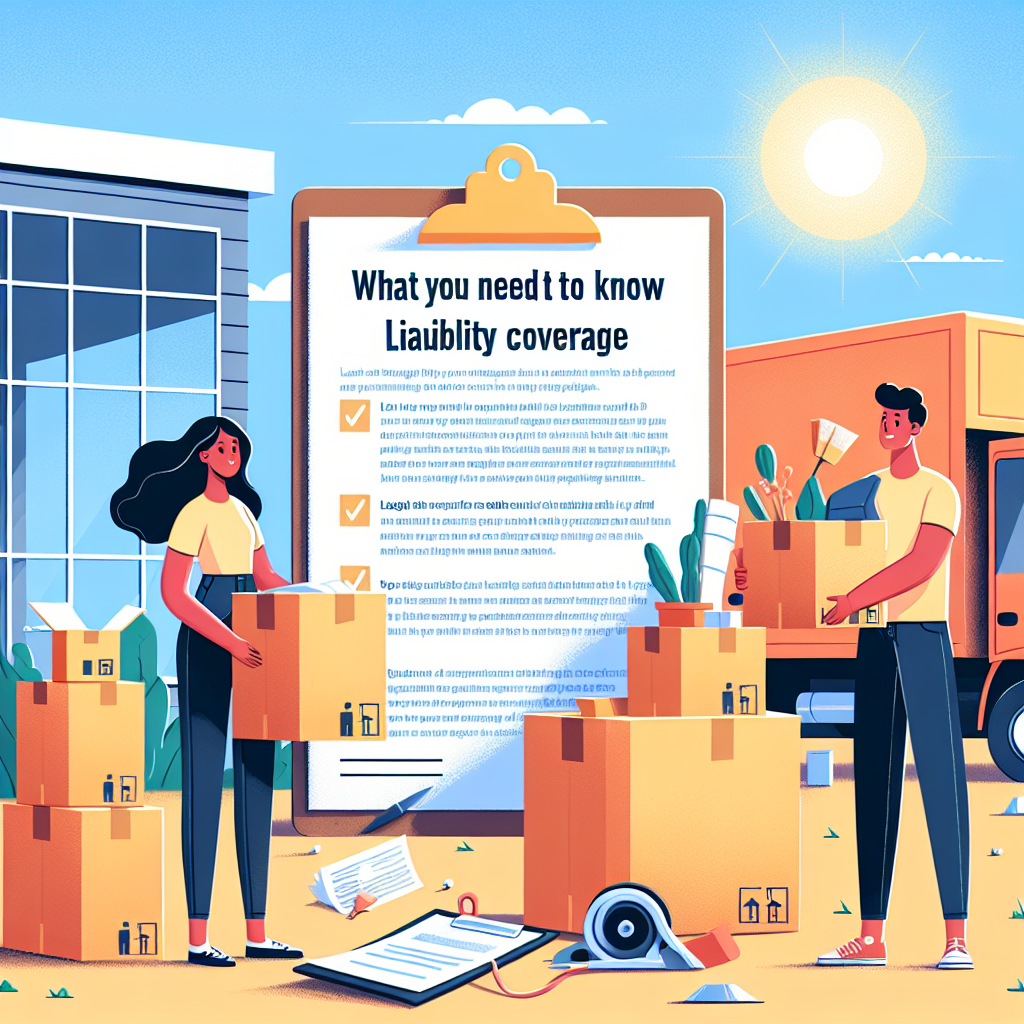Moving to a new home is an exciting chapter in your life, but it also comes with its own set of challenges, including the ever-important question of liability coverage. Whether you are using a professional moving company or handling the move yourself, understanding your options for liability coverage is crucial to safeguarding your possessions and securing peace of mind. In this comprehensive guide, we’ll break down everything you need to know about liability coverage when moving.
What is Liability Coverage?
Liability coverage is designed to protect you in the event that your property is damaged or lost during the move. Depending on the type of coverage you select, the level of protection can vary significantly. Understanding the distinctions between the available options can ultimately save you time, money, and stress.
Types of Liability Coverage
1. Basic Carrier Liability
When you hire a professional moving company, they typically offer Basic Carrier Liability as part of their services. This type of coverage is often included in the moving cost, but it’s important to realize that the compensation amount is usually minimal—typically around $0.60 per pound per item. This might sound adequate, but it often falls short in compensating for high-value items or irreplaceables.
2. Full Value Protection
Full Value Protection offers a more comprehensive safety net. Under this plan, the moving company is liable for the replacement value of any damaged or lost items. If an item is damaged, the mover will either repair it, replace it, or provide you with the item’s current cash value. This option costs more than Basic Carrier Liability, but the peace of mind it offers is often worth the extra investment.
3. Declared Value Coverage
This type of coverage allows you to declare a specific value for your possessions before the move. If your items exceed the weight limit associated with the declared value, be prepared to pay additional fees. Declared Value Coverage generally provides a middle ground between Basic Carrier Liability and Full Value Protection, giving you more control over your coverage.
Why You Should Consider Extra Liability Protection
Accidents can and do happen, even with the best-laid plans. Here’s why extra liability protection might be worthwhile for you:
High-Value Items
If you own valuable possessions—such as antiques, art, or electronics—the basic coverage may not adequately reimburse you for loss or damage. Assessing the estimated worth of your items will help you gauge whether additional coverage is necessary.
Unforeseen Events
Even professional movers can encounter mishaps, such as accidents, weather changes, or equipment failure. Securing liability coverage provides a financial safety net amidst unpredictable situations.
Peace of Mind
Knowing that your belongings are protected in transit can ease anxiety on moving day. With proper liability coverage, you can focus on the excitement of your new chapter rather than the worry of potential damages.
What to Discuss with Your Moving Company
Before finalizing your moving arrangements, consider these questions:
Coverage Options
Ask your moving company about the types of liability coverage they offer. Make sure you fully understand the terms and conditions associated with each option.
Additional Fees
Make sure you’re clear on any additional fees related to your coverage. Hidden costs can add up, so understanding your total expenditure is crucial.
Claims Process
What happens if something does go wrong? Familiarize yourself with the claims process to ensure swift and efficient resolution should the need arise.
Tips for Securing Your Move
Here are some proactive steps you can take to further safeguard your belongings during your move:
Document Your Items
Before your move, take inventory of your possessions. Photograph valuable items and take note of their condition. This documentation will serve as a crucial reference in the event of a claim.
Consider Third-Party Insurance
If you’re concerned about the liability coverage offered by your moving company, consider purchasing third-party moving insurance. This can often provide a more comprehensive safety net against damages.
Communicate with Friends and Family
If you’re moving with the help of friends and family, understand that their liability might differ from a professional company’s. Discuss your needs with them, and ask if they have their own insurance or coverage to extend to the move.
Conclusion
Moving can be a thrilling experience, but it’s essential to ensure your possessions are adequately protected. By understanding the nuances of liability coverage and considering your specific needs, you can move forward with confidence. Take the time to assess your coverage options—whether with a moving company or through third-party insurance—to ensure that your relocation is smooth, secure, and worry-free. With the right liability coverage, you can focus on what truly matters: building memories in your new home.


